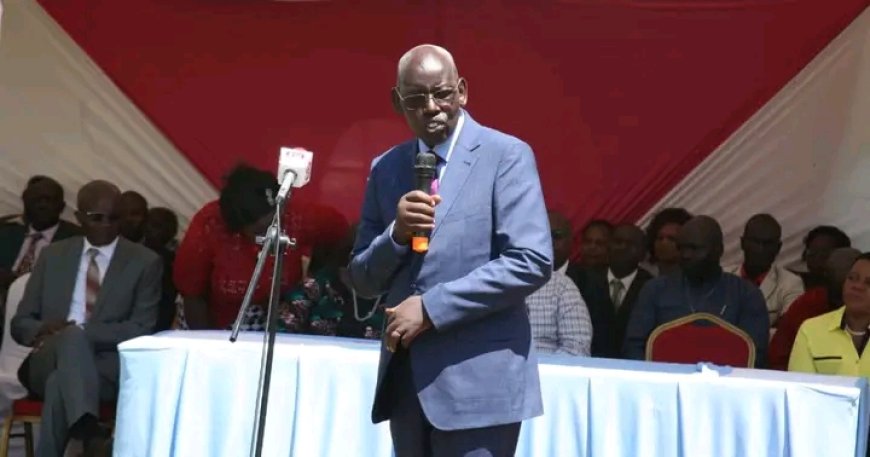Government allocates sh. 19.6 billion for varsity students

Nakuru
Tuesday August 15, 2023
KNA by Esther Mwangi
The government has set aside Sh 19.6 billion to fund University students as the new funding model for Universities and Technical and Vocational Education Training (TVETS) takes effect this September when the 2022 Kenya Certificate of Education (KCSE) candidates admission begin.
University Fund CEO Geoffrey Monari said the government had also allocated Sh 34.1 billion to fund continuing students under the old funding model of Differentiated Unit Cost (DUC) in all the universities in the 2023/2024 financial year.
On the New Funding Model (NFM), Monari clarified that 130,485 students placed in public universities will receive both government scholarships and loans depending on their level of need, while the 9662 students placed in private universities will only qualify for government loans.
Monari assured that no students will be left out of the funding as there were adequate funds for all and called on those who have received their admission letters to start applying for funding ahead of the August 27th deadline.
The CEO said those applying for the funding are required to adhere to the new guidelines set by the ministry of education and said the students could now access the Higher Education Financing portal via www.hef.co.ke, or visit the Huduma centres spread across the country.
At the same time, University Fund CEO arrayed fear of alleged fees hike saying the government had signed a Memorandum of understanding with all the universities barring them from increasing fees and warned those planning to defy the government directive that stern actions would be taken against them by the Ministry of Education.
“Under the new funding model which is student-cantered and quality-driven, the government will fund individual students depending on their level of need and no one will miss the funding”, assured Monari.
Speaking in Naivasha during a media workshop engagement, Monari said the new funding regime aims at enhancing equity, fairness and transparency in apportioning government scholarships and loans to those seeking University and TVET admissions.
He added that the government was commitment to safeguarding the quality of programs and courses being offered at the institutions of higher learning and colleges saying that the new model was crafted to address the uniform and an inequitable capitation witnessed under the differentiated unit cost (DUC) model, where the rich and the poor students received the same amount of government financing.
Unlike what has been the case, Monari explained that the universities and TVETs will no longer receive block funding in form of capitation based on the DUC whose sustainability had been a struggle following rampant mismanagement of the funds by individual universities.
Instead, Monari added that the government resolved that university funding shall be apportioned to individual students according to their level of need where the vulnerable students will receive 82 per cent scholarships and 18 per cent HELB loans.
The extremely needy students will receive 70 per cent scholarships and 30 per cent loans, the needy ones on the other hand will receive 53 per cent scholarships, 40 per cent loans and 7 per cent from household. The less needy students will be given 38 per cent scholarships, 55 per cent loans and 7 per cent from the households.
According to Kenya University and College Central Placement Services (KUCCPS) Chief Executive Officer Dr, Mercy Wahome, the new funding formulae seeks to offer students whose households are at the bottom of the pyramid equal opportunity in accessing university education and technical and vocational education and training (TVET).
HELB manager Charles Ringera said under the new funding regime, funding will be apportioned based on four criteria namely choice of the programme, household income band, affirmative performance and government priority areas.
President William Ruto early this year announced the new funding model and assured that students shall be supported adequately to meet the cost of the programme they choose to pursue.
“No student will ever be left behind,” President Ruto assured after unveiling the new model.
The announcement opened doors for the process of admitting the 2022 KCSE candidates whose fate had been in limbo awaiting the unveiling of the funding model.
About 92,350 students (29 per cent) who will join universities and TVETs institutions this year have been identified as vulnerable and extremely needy and will receive full government support in terms of scholarships, loans and bursaries.
Courtesy ; K. N. A
What's Your Reaction?



































































































































































































































































































